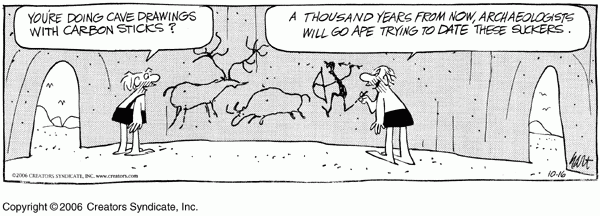When Christians discuss where we are in the stream of time,
there are certain “signs” we look for.
The major ones are listed in Matthew 24, Luke 21 and Revelation 6:
- Large-scale wars
- Frequent earthquakes
- Widespread food shortage, poverty and inflation
- Pandemics
- The preaching of the Good News of the Kingdom earth-wide
If you’ve been paying attention, you know you can check all those off your list. But the sign marking the Last Days includes some other details that don’t get as much attention, such as this one:
"Whenever they begin saying, 'Peace and Security!' then sudden destruction will come on them, as birth-pains on a woman with child; and they will not be able to get away from it." (1Thessalonians 5:3)
The greatest cry of “Peace!” in all history has to have been
the elation, the dancing in the streets, that accompanied the end of World War
Two.
Yet clearly, that event wasn’t what Paul was talking about, since
the ‘sudden destruction’ hasn’t happened. It is hard to imagine a war that so
dwarfs World War Two that its ending prompts a significantly louder cry of ‘Peace!’
– so loud that everyone knows it is the real fulfillment of the prophecy.
Perhaps the cry of ‘Peace and Security!’ at the end of World War II wasn't the sign simply because all the other signs, particularly the preaching of the Good News worldwide, weren't in place yet. Or, perhaps the cry of 'Peace and Security!' has to be different
from merely the end of a war, no matter how great. In my novel Resurrection Day I speculated that 1 Thessalonians
5:3 could be fulfilled by a technological advance so great that the majority of
mankind felt a personal improvement in their standard of living because of it. This is
not unrealistic: we are on the cusp of advances in battery technology, graphene,
thorium reactors and other marvels that potentially could, if used correctly,
have people sighing with relief, however misguided their belief. By itself, however, no single whiz-bang invention is going have people declaring an outbreak of peace.
But here’s another thought: What about a different take on "Peace"? In 2018 the United Nations held a special meeting entitled, “A New Approach to Peace.” The agenda was described as peace-building and sustaining peace. They focused on “renewed efforts toward conflict prevention addressing the root
causes of conflicts rather than the consequences of conflicts.” The agenda
candidly admitted that, in spite of the UN’s best efforts,
“Violent conflicts in many parts of the world are surging and becoming more complex, deadly and protracted.” There is a “troubling increase in the casualties among innocent civilians that have been the target of direct attacks, as well as unparalleled numbers of displaced populations.”
The United Nations, it said, “needs to adjust its capacities to build and sustain peace. It must engage with Member States long before conflict breaks out and be able to support them at all stages of conflict.”
Their real motivation appeared a couple paragraphs
later: “More resources are spent on addressing the aftermath of conflicts than
on preventing them from flaring up and escalating.”
One of the most effective ways to motivate someone to do
something your way is to show them how it will save them or make them money.
In 2019 the president of El Salvador took a selfie during his speech from the UN's podium, telling the audience that social media had become more effective at bringing people together than any efforts by the UN.
In 2019 the president of El Salvador took a selfie during his speech from the UN's podium, telling the audience that social media had become more effective at bringing people together than any efforts by the UN.
The UN has been called ‘The World’s Largest Debating Society,’
and with good reason. If their success was measured by the number of empty words they’ve
produced they would be ranked the most successful organization the world has
ever seen. So my hopes are not too high that anything will result from this
high level meeting.
But what if we look at the UN from a different perspective?
Prior to the 20th century, there was no world peace organization. When a war ended, the victor dictated terms to the loser, and the world moved on. It was only after the horrors of World War One that multiple nations saw the need to sit down together and try to hammer out regulations to keep the peace everywhere, not just in the previously warring countries. That's huge: in all the thousands of years of human history, this peace and security effort is unique.
The original organization, called the League of Nations, comprised 60 nations. It failed significantly when World War II broke out. But it was reorganized when that war ended. Today every government on Earth has joined it. Its ineffectiveness could, theoretically, be fixed. It could, with some adjustments, become an organization that is apparently useful, that seems to be actually creating peace and security.
I'm not saying I'd put my faith in it. But as a Christian who carefully watches events to keep
track of where we are in the stream of time, I’d be crazy to ignore it.
Please leave a polite comment. (Comments are monitored so, if you have an agenda, don't waste your time.) To read another of my columns on this subject, click here.






